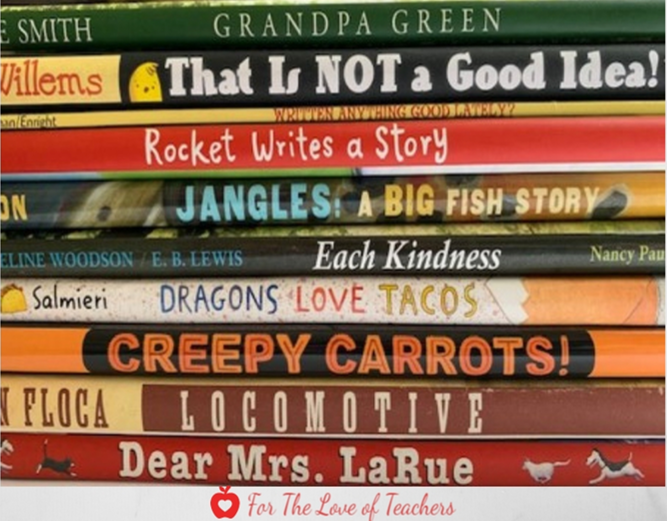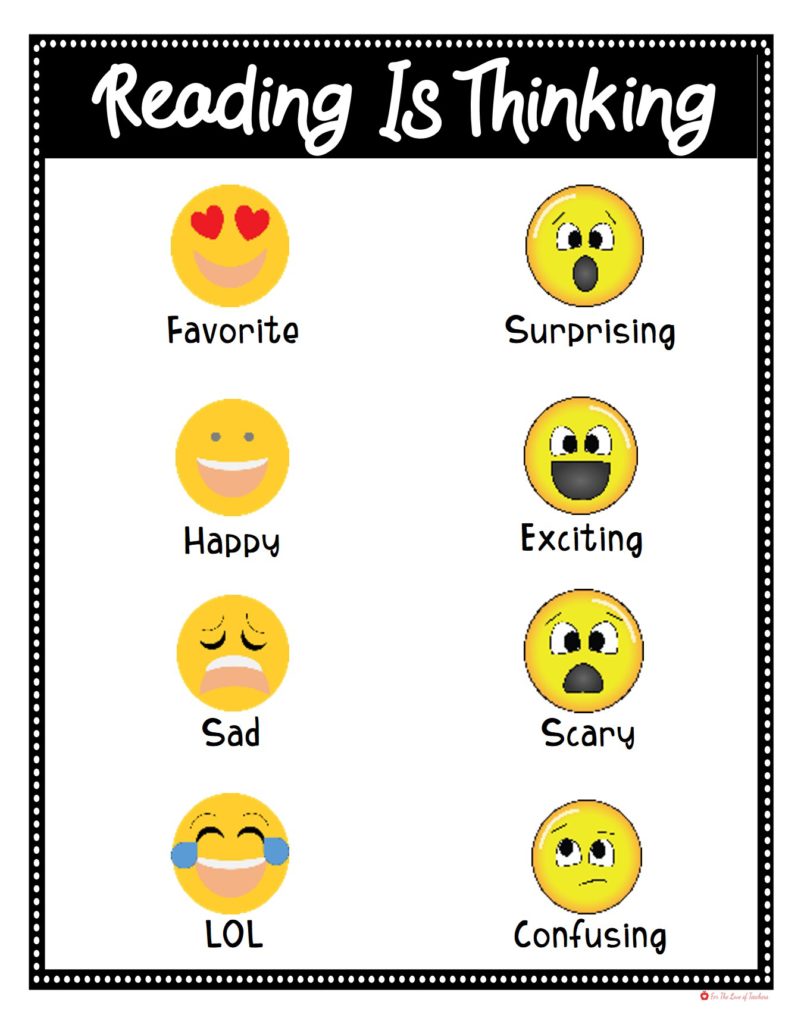 Many teachers have expressed how difficult it is to teach writing in an already jammed packed school day. That’s why it is so important to integrate reading and writing.
Many teachers have expressed how difficult it is to teach writing in an already jammed packed school day. That’s why it is so important to integrate reading and writing.
Must have books for teaching both reading and writing.

First, set up a Reader’s Workshop. Similar to Writer’s Workshop, Reader’s Workshop is a model for teaching students strategies for reading comprehension.
Reader’s Workshop looks like this:
-
Mini-Lesson – Teach a reading skill or strategy. Tie this in with the writing skill/strategy you will be teaching. It could be the same.
-
Independent Reading – Students read books on their just right reading level. They may keep a reading log to record the books they read. They may also keep a journal to write about what they read. During this time, the teacher meets with guided reading groups to monitor and assess student reading.
-
– A peer or teacher may respond to their journal entries. I took 5 notebooks home each night to respond to all of my students’ journal entries in one week.

Here’s a guide for The First 20 days of Readers Workshop.
Collect mentor texts to teach reading and writing skills and strategies. This could be the book you will read that is part of your daily reading instruction.
Here is a great list of Mentor Texts to support Reader’s Workshop and Writer’s Workshop.
Decide what reading and writing skills you will be integrating while teaching.
Encourage students to think like readers and writers. Before the mini-lesson, tell students to think about what they learned from the author that they will try in their own reading and writing today/this week. This is a perfect way to set and track reading and writing goals.
Balanced Literacy is a framework that gives equal attention to both reading and writing instruction. It combines Reader’s Workshop, Writer’s Workshop and Word Work. This type of framework helps with managing time for a busy teacher in a busy classroom.
Components:
Shared Reading– Interactive reading of a text shared by students supported by the teacher.
Modeled Reading– Similar to Think Aloud, the teacher models a reading strategy aloud to the students.
Guided Reading– Small group, differentiated instruction that focuses on a reading strategy or skill.
Independent Reading– Students independently read just right books with little or no assistance from the teacher.
Teach students how to be independent readers by choosing just right books and using sticky notes to mark their best thinking while reading.


You can grab my Think Marks Sticky Notes & Posters and Bookmarks at the Shop.

Shared Writing – The teacher and students write together. The students give thoughts and ideas and the teacher scribes it.
Interactive Writing – Students write together with the support of the teacher, “sharing the pen.”
Guided Writing – Small, group lessons and activities to support students in writing instruction.
Independent Writing – Students write independently for varying purposes in different genres.
Student-centered activities that reinforce and strengthen word skills
Check out the book, The Daily 5: Fostering Literacy in the Elementary Grades – A Series of Literacy Tasks:
– A Series of Literacy Tasks:
1. Read to Self
2. Read with Someone
3. Word Work
4. Listen to Reading
5. Read with a Teacher
Try this for setting up a Balanced Literacy Block in your classroom.
One way to encourage a love of reading, and for students to engage in critical thinking and discussion skills is for students to be part of a literature circle or a book club. Students are assigned reading, a role, and then meet with a small group of peers to have meaningful discussions about characters, themes, plot, connections, questions, and big ideas in the book. The group is mainly run by the students, but the teacher may act as a facilitator to guide the group if needed, particularly with younger grades with students still developing in their discussion and thinking skills.
But sometimes the writing, or responding to the text, within each role was too much for them. I want my students to be able to focus on the reading and responding in order to prepare for meaningful discussions. These response cards serve as a reference tool with the defined role and ideas to prompt responding to the text on a sticky note. The sticky note provides just the right amount of space to write and respond in a non-intimidating way so students could read the assigned text, get right to responding, and then discuss the text with their group members.

It includes:
-
9 Literature Circle Response Cards (Summarizer, Predictor, Discussion Director, Connector, Word Wizard, Illustrator, Passage Master, Character Captain, and a card with all the roles.
-
8 Sheets of Individual Sticky Notes with each role
-
Sticky Note Response Log (three-hole punch or put into a sheet protector and store in a binder/three-prong folder for a quick assessment check.
You can laminate the cards for easy reuse and put them on a binder ring for students to use and refer to in small groups. You can check out my literature circle response cards and sticky notes here.
Mini-Lesson Format (Suggested lesson time: 15-20 minutes)
-
Teacher models the thinking s/he does when reading
-
Use pre-selected points in the text to model the thinking of good readers. (predict, visualize, make connections, ask questions, infer, restate/summarize, make and modify analogies, monitor for understanding)
-
To introduce the think-aloud concept, begin the first lesson by describing your thoughts while drawing a picture and/or writing a few sentences
-
Begin with a short text/ several pages of a story. Consider picking a text that is above the level of the student and has engaging content.
-
Decide on 1-3 strategies to model (the number would depend on the grade level; see the strategies listed above)
-
Tell students what strategy you’ll be modeling, and why it’s useful for the text you’ll be reading; have students keep track of when you use the strategy as you model its use
Plan on doing the lesson in three parts:
1. The teacher does read-aloud think-aloud, and students listen
2. The teacher does read-aloud think-aloud, and students help think-aloud (whole group, pairs)
3. The teacher does read-aloud and pauses at pre-selected points, students write/draw their thinking, then discuss responses
Balanced Literacy Diet: Students ask questions pertaining to a text before, during and after reading to build comprehension. For more information go to full lesson plan at http://www.oise.utoronto.ca/balancedl…. Also, go to http://www.LitDiet.org for hundreds of additional free lesson plans and for virtual tours of classrooms.

GraphicOrganizersforReading– a great resource for teaching and using reading strategies












